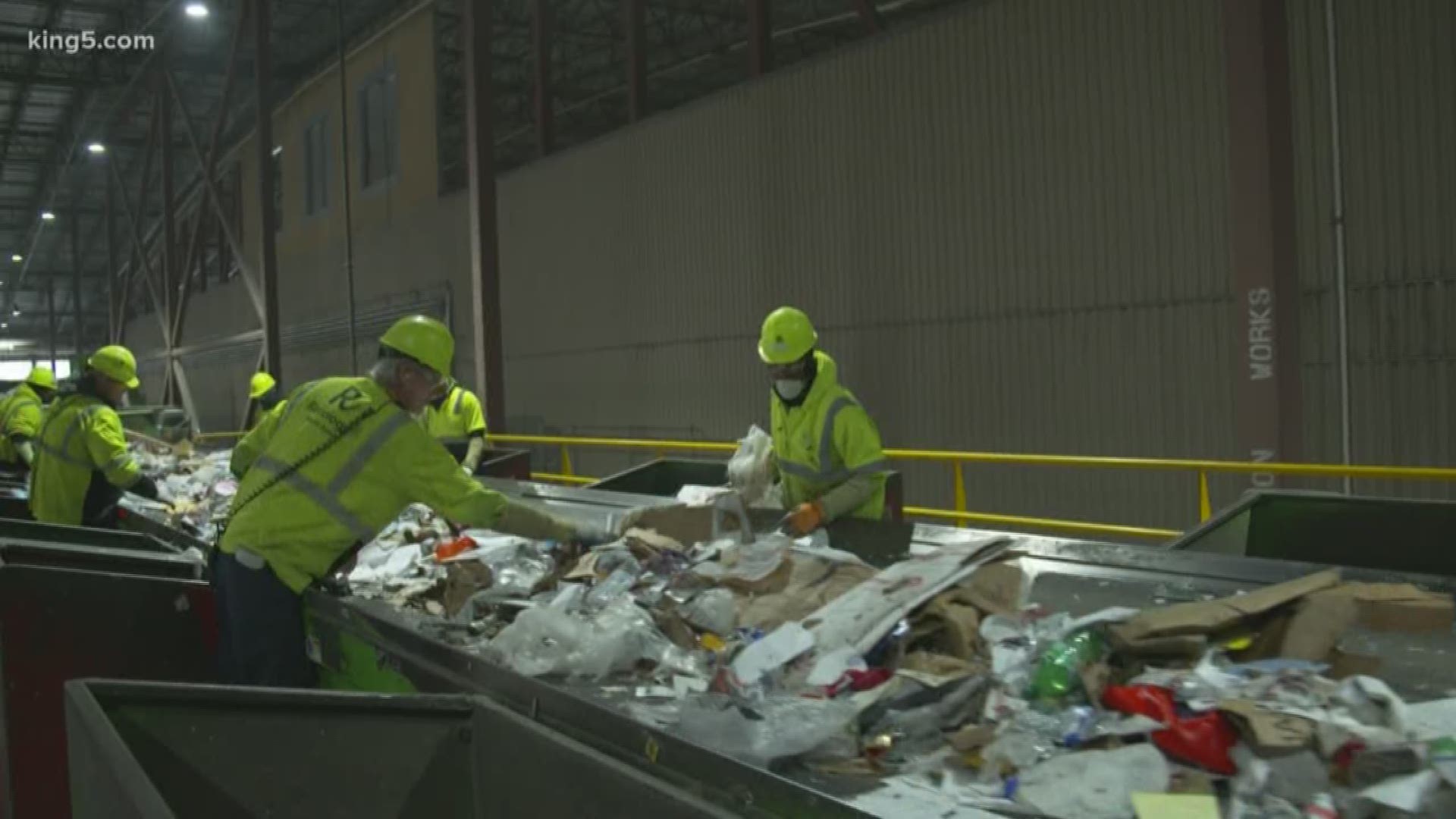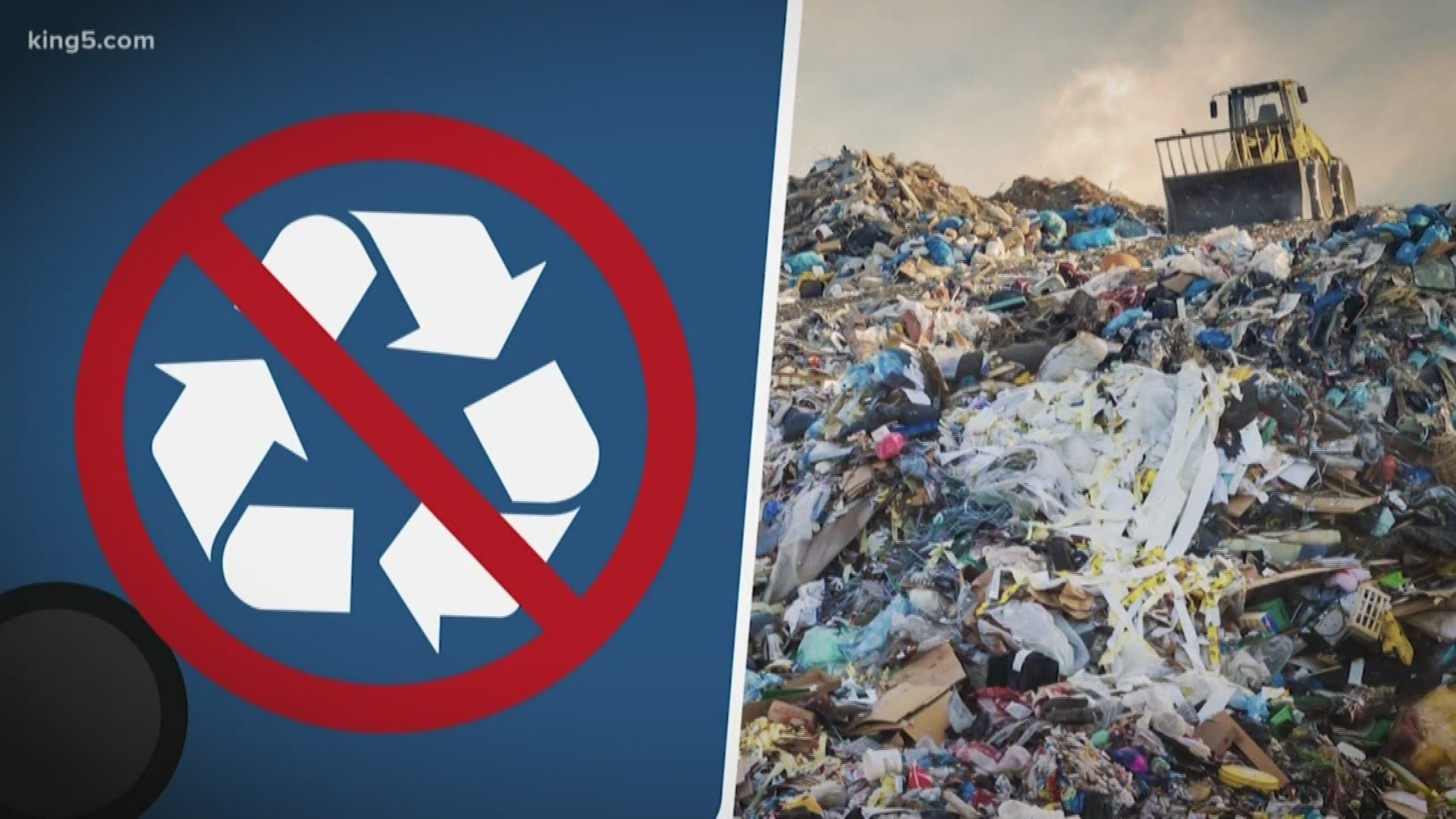SEATTLE — Ever wonder what happens to your recyclables once the truck comes by and the bins’ contents leave your house?
A good chunk of recyclables in King County eventually makes its way to Recology’s material recovery facility in Seattle's SODO neighborhood, where the mixed items are sorted by a series of machines and personnel.
The material whizzes by on a conveyor belt as about 40 workers pick out everything that is not recyclable or that could gum up the machinery.
There, they find all sorts of stuff that should never have gone in the recycling bin – dirty diapers, messy food containers, mountains of flimsy plastic and even used needles.
Recology says about 10% of the material that comes in qualifies as contamination or is unrecoverable and has to be sorted out.
As for the actual recyclables, the organization said it varies.
“It goes to a variety of different end destinations and markets,” said Quinn Apuzzo, of Recology. “Recology prioritizes domestic end markets, so we try to find recyclers here in North America for these materials. But some materials, there aren’t domestic options available.”
The recovery facility churns through about 90,000 tons of material a year.
"Recology sends all recoverable recyclable materials to end markets for re-manufacture," she said.
Within the city of Seattle, recyclables make various journeys after the sorting facility:
- 28% of the total, including all glass and metal, steel and iron (ferrous) stay in the area.
- 38% of the total is handled in the Northwest and North America: 100% of plastics and aluminum, 75% of cardboard and 45% of paper.
- The remaining 34% -- 55% of paper and 25% of cardboard -- makes the trip to Asia, the city said.
Pierce and Snohomish Counties said the government largely does not track where the recyclables end up, since they’re handled by independent companies. The same goes for Everett.
Tacoma said 5% goes to Seattle, 43% to the Northwest and North America and 52% goes to Asia.
The whole process was complicated at the end of 2017 and early 2018, when China announced it would stop accepting a large portion of recyclables. Recyclers had to scramble to find new markets for some materials.
Apuzzo said that had an immediate impact on Recology.
“Within about a 9 month period, the prices for mainly mixed paper decreased by 80%,” she said. “And that’s important because the revenue from recyclable materials helps pay for recycling programs. It helps pay for trucks and facilities like this.”
New markets have developed, said King County director of Solid Waste Pat McLaughlin, but a huge amount of recyclable material still makes its way to the dump.
900,000 tons of waste heads to the Cedar Hills Regional Landfill every year. They estimate 70% of that material is either reusable or recyclable, and could have been diverted.
“It’s a big problem because these materials could be providing a beneficial use in so many other ways,” McLaughlin said. “They belong in the economy, not in a pit.”
He believes most of that comes from folks that don’t know what actually is recyclable – confusion that comes from varying guidelines depending on where you live.
“We really need one way to recycle,” he said of King County. “Not 38.”
He also stressed that residents need to empty, clean and dry recyclables to prevent contamination that could send them to the dump.
“We need to do a better job of educating our consumers, helping them understand what and how to recycle,” McLaughlin said.
He said while the China changes did impact the regional system around Seattle, not all materials suffered.
“We’re fortunate that our regional partners have worked hard to find a demand for that mixed paper and mixed plastic, so we’re not taking those bales of resources and burying them here, they’re getting back into the economy,” he said.
Apuzzo said it isn’t as easy as it once was – but that the process is still worth it.
“When we recycle, instead of sending materials to the landfill, they’re turning into new products,” she said. “This allows us to reduce the need to extract virgin materials, and also transport those virgin materials. So there’s multiple environmental and economic benefits to continuing to recycle.”
What to be a better recycler? It varies based on where you live, but some tips are available here.


